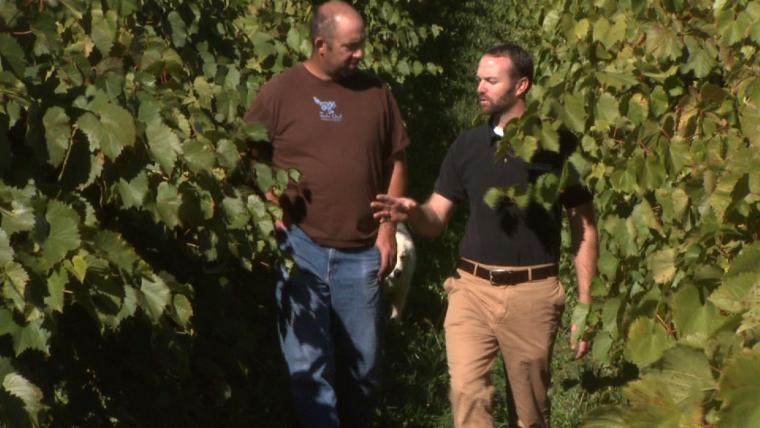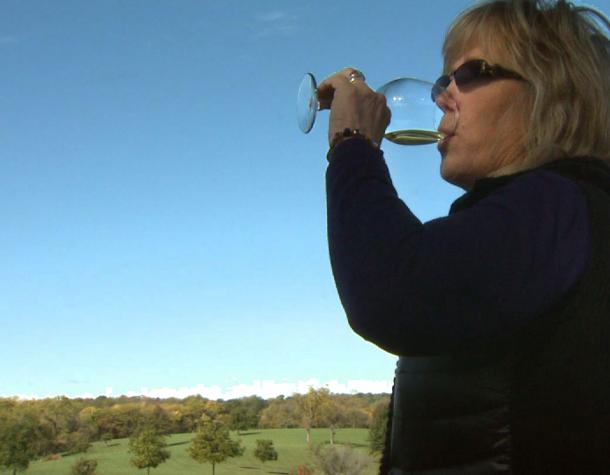KANSAS CITY, Mo. - Beautiful countryside and wine. What’s not to love? Add Midwestern hospitality and that’s what visitors will find on the Great Northwest Missouri Wine Trail. Eight wineries work together to bring wine-tasting tourists to their region just north of Kansas City.
Marlin Bates, horticulturist with University of Missouri Extension, knew that a wine trail would be a great opportunity for the eight wineries that stretch from Rushville to the west, Osborn to the north, Rayville to the east and Liberty to the south.
“We’re sitting just outside of Kansas City, Mo., city limits. There are 2 million people that live in this area and many of them are looking for an opportunity to come out to a working farm and experience the ambiance of that place,” Bates said.
Bates helped bring the wineries together to discuss the creation of a wine trail. Many of the owners have used MU Extension’s resources to help them with their individual businesses.
Missouri, now the eighth-largest wine producing state, has nine wine trails, 393 vineyards and more than 1,600 acres of wine grapes. Utilizing Midwestern grapes such as Norton, Missouri wines are winning national and international acclaim.
Galen Haddock, owner of Ladoga Ridge Winery in Smithville, Mo., is one of the eight members of the Great Northwest Missouri Wine Trail. He says that while Napa Valley is known for its dry wine, Missouri wine is different.
“Here at Ladoga Ridge Winery, we focus on sweet fruit wines. The Midwest tends to like that kind of wine,” Haddock said. “We have many people that come in saying they’re just a dry wine drinker. But after they try it, they end up leaving with a bottle of my strawberry-rhubarb wine.”
While a wine trail is certainly about wine tasting, it’s also much more. “It’s about the area, the comfort. They want to hear the stories about the wine and they want to hear about you. In other words, they want the entire winery experience,” Haddock said.
Tourists looking for that “entire winery experience” bring one very important thing with them: money.
“It makes an economic impact on the communities too,” Bates said. “It’s not just good for the farms, or the farms that are participating cooperatively. It’s good for the other businesses as well.”
“As a wine trail we’re definitely stronger together,” said Jason Gerke, co-owner of Jowler Creek Vineyard and Winery in Platte City, Mo. “We can buy in bulk, which saves money, and we can pool our marketing. We can even help each other when equipment fails during critical harvest season.”
The Missouri wine industry is realizing small but consistent growth, which presents opportunities for innovation. Bates worked with Gerke on an integrated pest management grant to establish sustainable pest control at the Jowler Creek Winery.
Now, sheep and chickens wander through the vineyard. The sheep eat weeds and the chickens keep insect numbers down. Gerke says this sustainability practice reduces the need for chemicals.
Growing grapes, and designing and producing wine attracts a certain kind of entrepreneur, one who likes to wear many hats.
“It’s like having three vocations in one,” Gerke said. “We get to be farmers growing a crop. We get to be artists creating wine, and we’re also in sales and marketing.”
The future looks bright for Missouri’s wine industry, and so too for the Great Northwest Missouri Wine Trail. Bates says the group is already planning for the arrival of new wineries to the area and discussing how to add them to the wine trail.
To learn more about the Great Northwest Missouri Wine Trail, go to www.nwmissouriwine.com.

